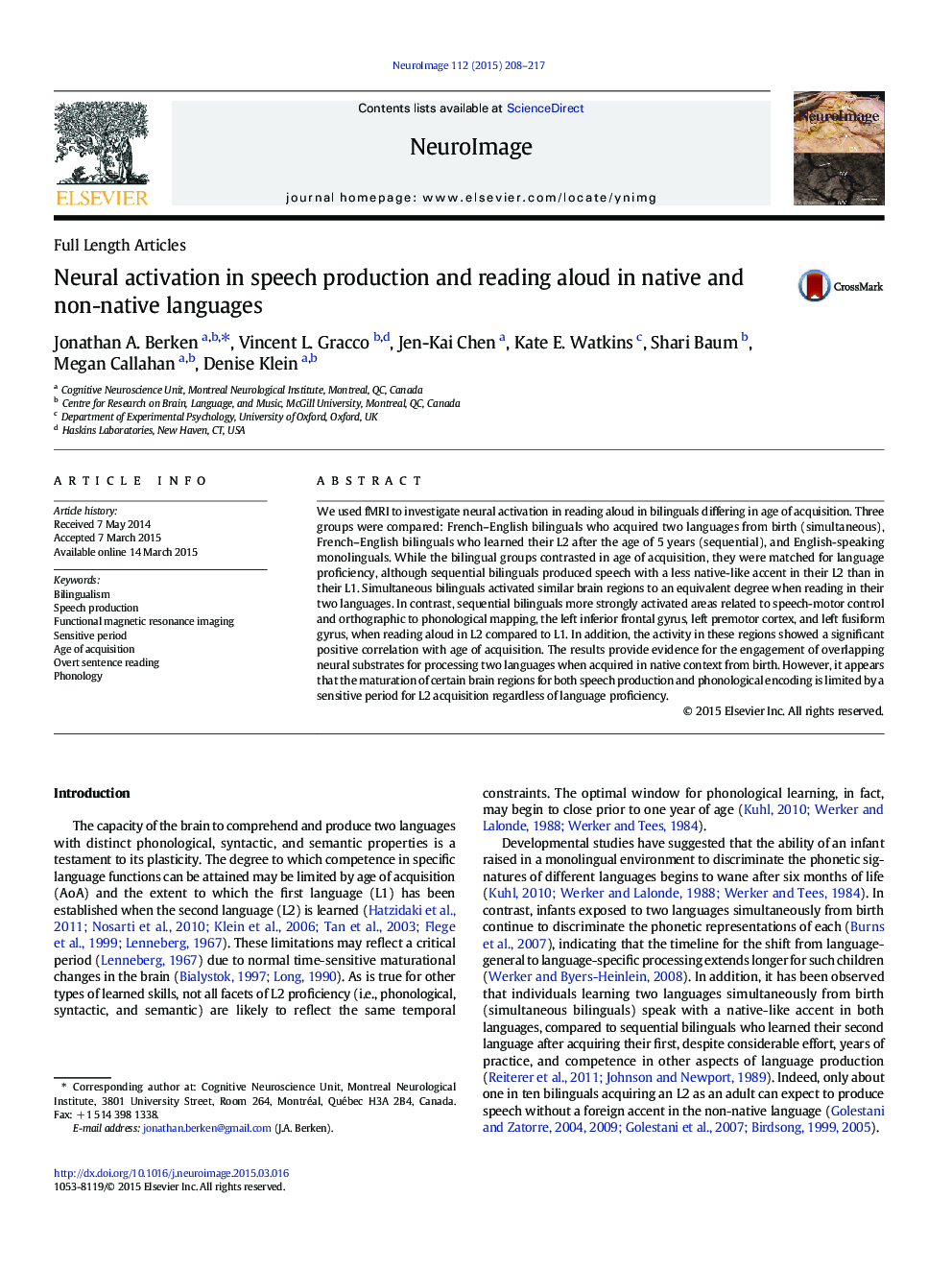| Article ID | Journal | Published Year | Pages | File Type |
|---|---|---|---|---|
| 6024956 | NeuroImage | 2015 | 10 Pages |
â¢fMRI was used to examine bilinguals while they read aloud.â¢Bilinguals were matched for proficiency, but contrasted in age of acquisition.â¢Sequential bilinguals had a less native-like accent in L2 than L1.â¢Activation differences were consistent with a sensitive period for L2 acquisition.
We used fMRI to investigate neural activation in reading aloud in bilinguals differing in age of acquisition. Three groups were compared: French-English bilinguals who acquired two languages from birth (simultaneous), French-English bilinguals who learned their L2 after the age of 5Â years (sequential), and English-speaking monolinguals. While the bilingual groups contrasted in age of acquisition, they were matched for language proficiency, although sequential bilinguals produced speech with a less native-like accent in their L2 than in their L1. Simultaneous bilinguals activated similar brain regions to an equivalent degree when reading in their two languages. In contrast, sequential bilinguals more strongly activated areas related to speech-motor control and orthographic to phonological mapping, the left inferior frontal gyrus, left premotor cortex, and left fusiform gyrus, when reading aloud in L2 compared to L1. In addition, the activity in these regions showed a significant positive correlation with age of acquisition. The results provide evidence for the engagement of overlapping neural substrates for processing two languages when acquired in native context from birth. However, it appears that the maturation of certain brain regions for both speech production and phonological encoding is limited by a sensitive period for L2 acquisition regardless of language proficiency.
